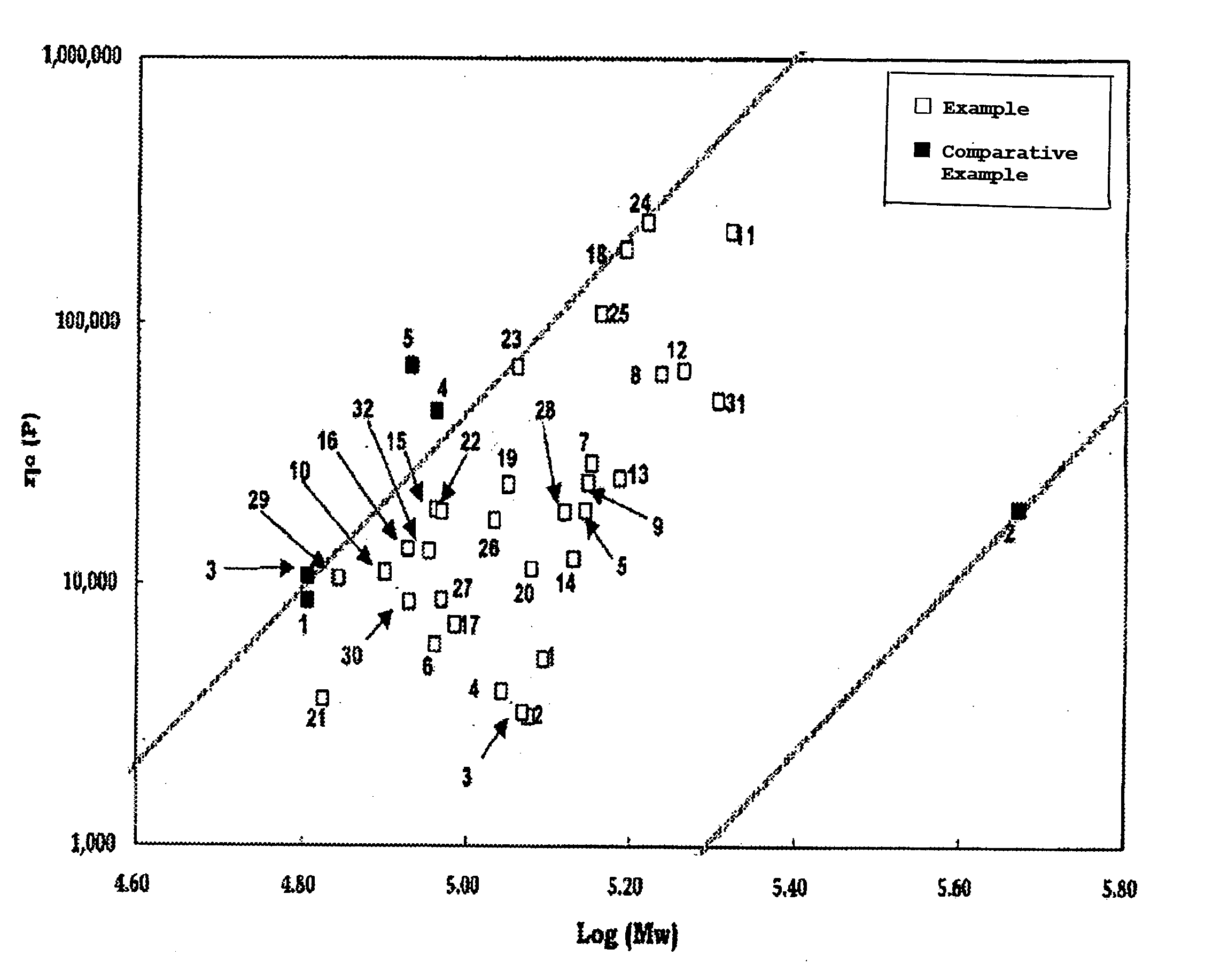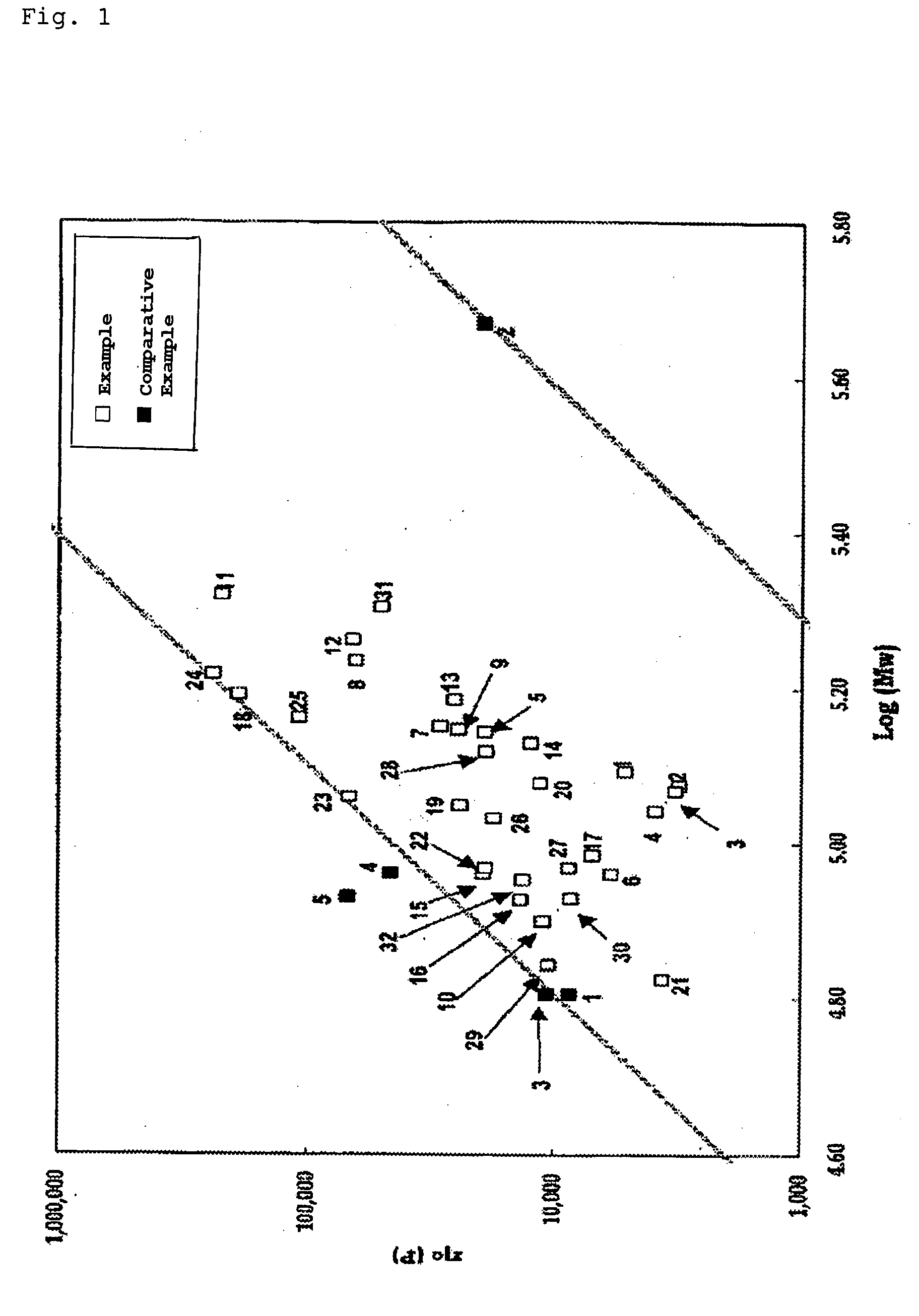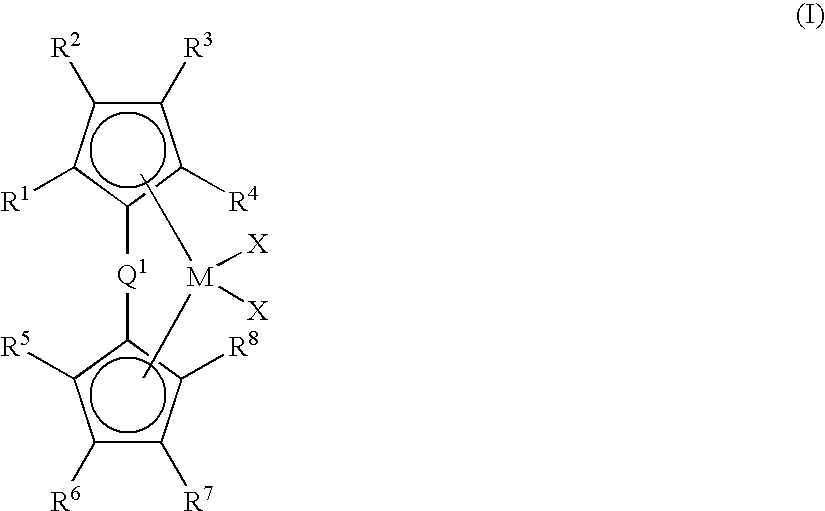Ethylene-Based Resin and Molded Object Obtained Therefrom
a technology of ethylene-based resins and molded objects, applied in the field of ethylene-based resins, can solve the problems of significant neck-in, inferior melt tension, and reduced product yield
- Summary
- Abstract
- Description
- Claims
- Application Information
AI Technical Summary
Problems solved by technology
Method used
Image
Examples
example 1
Preparation of Solid Component (S-1)
[0156] Into a reactor having an internal volume of 260 liters equipped with a stirrer, 10 kg of silica (SiO2; average particle diameter: 12 μm) dried at 250° C. for 10 hours in a nitrogen atmosphere was suspended in 90.5 liters of toluene and then cooled to 0 to 5° C. 45.5 liters of solution of methyl alumoxane (3.0 mmol / ml in terms of Al atom) in toluene was added dropwise to the suspension over 30 minutes during which the temperature in the system was kept at 0 to 5° C. Subsequently, the mixture was reacted at 0 to 5° C. for 30 minutes, then heated to 95 to 100° C. over about 1.5 hours and subsequently reacted at 95 to 100° C. for 4 hours. Thereafter, the temperature of the reaction mixture was dropped to room temperature, and the supernatant was removed by decantation. The solid component thus obtained was washed twice with toluene, and toluene was added thereto to adjust the whole volume to 129 liters to prepare a slurry of solid component (S...
example 2
[EXAMPLE 2] TO [EXAMPLE 4]
[0165] An ethylene-based polymer was obtained in the same manner as in Example 1 except for changing, in Example 1, the ethylene / 1-hexene copolymerization conditions to the conditions shown in Table 1 (see Table 1). Using the resulting ethylene-based polymer, a measurement sample was prepared in the same manner as in Example 1. The results of physical property measurement and extrusion lamination molding conducted using the sample are shown in Table 5 and Table 10.
example 5
Preparation of Solid Catalyst Component (X-2)
[0166] Into a reactor having an internal volume of 114 liters equipped with a stirrer, 18.6 liter of toluene and a 7.9-liter portion of the slurry of the solid component (S-1) in toluene (1200 g in terms of solid portion) prepared above were added under a nitrogen atmosphere. On the other hand, into a reactor having an internal volume of 100 liters equipped with a stirrer, 14.5 liters of toluene was charged under a nitrogen atmosphere, and a 5.0-liter portion of a solution of metallocene compound (A-1) in toluene (7.81 mmol / L in terms of Zr atom) was charged under stirring. Then, a 2.0-liter portion of a solution metallocene compound (B-1) in toluene (2.17 mmol / L in terms of Zr atom) was charged and mixed for several minutes [(A-1) / (B-1) molar ratio=85 / 15]. Subsequently, the mixed solution prepared was fed under pressure to the reactor containing the slurry of solid component (S-1) in toluene. After the feeding, the mixture was reacted a...
PUM
| Property | Measurement | Unit |
|---|---|---|
| Temperature | aaaaa | aaaaa |
| Temperature | aaaaa | aaaaa |
| Weight | aaaaa | aaaaa |
Abstract
Description
Claims
Application Information
 Login to View More
Login to View More - R&D
- Intellectual Property
- Life Sciences
- Materials
- Tech Scout
- Unparalleled Data Quality
- Higher Quality Content
- 60% Fewer Hallucinations
Browse by: Latest US Patents, China's latest patents, Technical Efficacy Thesaurus, Application Domain, Technology Topic, Popular Technical Reports.
© 2025 PatSnap. All rights reserved.Legal|Privacy policy|Modern Slavery Act Transparency Statement|Sitemap|About US| Contact US: help@patsnap.com



